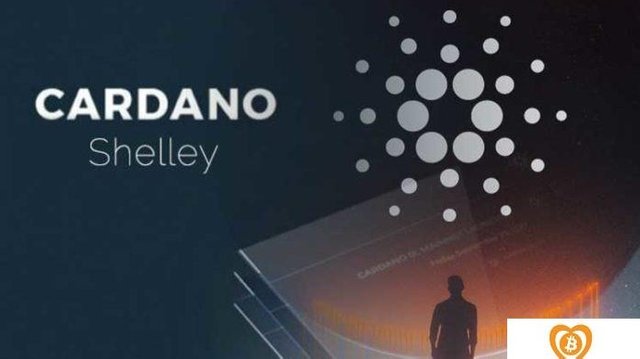Cardano: IOHK Sets Parameters For Shelley And Awards, ROI

The Cardano Shelley code of June 30 in the testnet remains on schedule, the mainnet parameters have been defined, which will determine, among other things, the rewards for ADA holders and operators of betting pools.
Based on the current ADA price and other assumptions, IOHK expects an average return on investment (ROI) of 6% to 6.5% for equity pool operators.
As Aparna Jue, IOHK product manager, explained last Thursday in the June development update, the release of the Cardano Shelley code in the public testnet on June 30 remains on schedule. The Hard Fork Combinator was successfully published on the public test network this week, and numerous tests in the internal networks passed, so that an exit candidate was selected.
Last week, as Jue reported and Lars Brünjes explained, the focus was on defining "solid parameters" for the Shelley network. Cardano Shelley's behavior is controlled by approximately 20 parameters for which IOHK must define values before launching the main network. As Brünjes pointed out in a blog post, most of the settings are technical in nature, so although correct settings are important for security and optimizing system performance, they have no significant impact on the user experience.
However, certain parameters have a very great influence. They determine the degree of centralization of the Cardano ecosystem, as well as the profitability of the delegation and operation of a stake pool. Their optimal setting is therefore crucial for the success of the main Cardano Shelley network. One of these parameters is the desired number of bet pools (k), as Brünjes described:
The Cardano incentives have been designed to encourage a balance with k fully saturated pools, which means that the rewards will be optimal for everyone when all issues are delegated uniformly to the k most attractive pools. The higher k , the more decentralized the system. But a higher k also leads to a less efficient system (higher costs, more energy consumption) and lower rewards for stewards and stake pool owners.
In order to create a balance between decentralization and attractive rewards for participating pool operators, IOHK will initially set the value at k = 150 and then gradually increase this value. This will ensure that the system is stable and efficient at first and can grow gradually over time to become more decentralized and even more secure thereafter:
The number of 150 betting pools of roughly equal size makes Cardano an order of magnitude more decentralized than any other blockchain. And that's only the beginning. There is no reason why there could not be thousands of betting pools in the future.
Rewards for Cardano Stake Pool Operators and ROI
In this sense, another extremely important parameter is of course the reward for ADA holders (for delegation) and operators of betting pools. These come from two sources, transaction fees, which are collected in a "virtual pot" by era and then distributed, and monetary expansion. The latter is regulated by a fixed percentage (p), which controls the release of the remaining ADA reserves . In addition, a certain percentage (τ) of the pot is sent to the treasury, the rest is used as a period reward.
As Brünjes explains, p will initially be 0.22%. This means that every four to five years, half of the remaining reserve will be used. This is roughly equivalent to halving Bitcoin , so ADA will have a similar rate of inflation. The continued decline in emissions must be offset by the increasing adaptation and therefore by the increase in transaction revenues:
So we think it makes sense to expect Cardano's trade volume and exchange rate to increase enough over the next eight years to more than make up for the decline in monetary expansion over this period.
The value τ, which goes to the treasury by epoch, is set to 5%, which means that during the next 5 years, at least 380,000,000 ADA will go to the treasury.
Returns for equity pool operators will average 6% to 6.5% based on the above parameters, assumed costs of $ 2,000 to operate a stake pool, at the ADA price current and the target number of pools (150 to 500). With an ADA price going up, the return on investment can still increase significantly.
However, as Brünjes also noted, the values initially suggested are just the beginning. In the months and years to come, the values will have to be refined and adjusted:
No other blockchain has ever done what we are going to do, we are drawing new territory at each step and moving to the forefront of science and technology, so we cannot rely on existing data and statistics or to past experience, but we must use informed assumptions and mathematical models as often as possible.
Resources
https://passioncrypto.com/cardano-iohk-definit-des-parametres-pour-shelley-et-les-recompenses-roi/